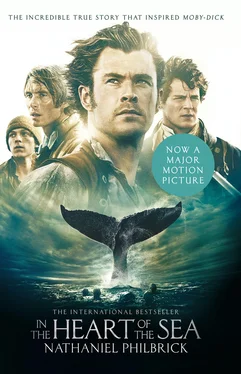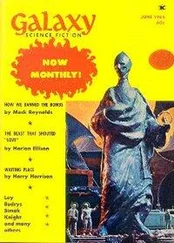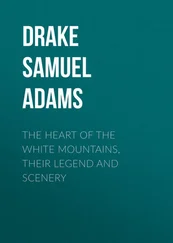1 ...8 9 10 12 13 14 ...19 Once again, each officer attempted to man his boat with as many fellow Nantucketers as he could. Nickerson found himself on Chase’s boat, with the Nantucketer Benjamin Lawrence as a boatsteerer. Nickerson’s friend (and the captain’s cousin) Owen Coffin was assigned to Pollard’s boat along with several other Nantucketers. Matthew Joy, who as second mate was the lowest-ranking officer, was left without a single islander on his boat. The three remaining men not chosen as oarsmen became the Essex ’s shipkeepers. It was their duty to handle the Essex when whales were being hunted.
The first day of a whaling voyage included yet another ritual—the captain’s speech to the crew. The tradition was said to date back to when Noah first closed the doors of the ark, and was the way the captain officially introduced himself. It was a performance that all aboard the ship—officers and green hands alike—attended with great interest.
As soon as Pollard began to speak, Nickerson was impressed by the difference between the captain and the first mate. Instead of shouting and cursing at the men, Pollard spoke “without overbearing display or ungentleman-like language.” He simply stated that the success of the voyage would depend on the crew and that the officers should be strictly obeyed. Any sailor who willfully disregarded an order, Pollard told them, would have to answer not just to the officers but to him. He then dismissed the men with the words “Set the watch, Mr. Chase.”
Cross-section of the Whaleship Essex
1 captain’s and officers’ cabins
2 steerage
3 blubber room
4 forecastle
5 hold
THE men of the Essex ate and slept in three different areas: the captain’s and mates’ cabins, in the aft portion of the ship; steerage, where the boatsteerers and young Nantucketers lived, just forward of the officers; and the forecastle—the cramped, poorly lit quarters in the extreme forward part of the vessel, separated from steerage by the blubber room. The divide between the forecastle and the other living quarters was not just physical but also racial. According to Addison Pratt, a green hand on a Nantucket ship in 1820, the forecastle was “filled with darkies” while the white sailors who weren’t officers lived in steerage. Reflecting the prejudices typical of a Nantucket whaleman, Thomas Nickerson considered himself “fortunate indeed to escape being so closely penned up with so large a number of blacks” in the Essex ’s forecastle.
But the forecastle had its merits. Its isolation (the only way to enter it was from a hatchway in the deck) meant that its occupants could create their own world. When he sailed on a merchant voyage in the 1830s, Richard Henry Dana, the author of Two Years Before the Mast , preferred the camaraderie of the forecastle to steerage, where “[y]ou are immediately under the eye of the officers, cannot dance, sing, play, smoke, make a noise, or growl [i.e., complain], or take an other sailor’s pleasure.” In the forecastle the African American sailors indulged in the ancient seafaring tradition of “yarning”—swapping stories about passages, shipmates, and wrecks, along with other tales of the sea. They danced and sang songs, often accompanied by a fiddle; they prayed to their God; and, in keeping with yet another oceangoing tradition, they second-guessed the captain and his officers.
BY THE following morning, many of the green hands found themselves in the throes of seasickness, “rolling and tumbling about the decks almost ready…to die or be cast in to the sea,” Nickerson remembered. Nantucketers had what they considered a sure-fire cure for seasickness, a treatment that more delicate mortals might have considered even worse than the malady. The sufferer was made to swallow a piece of pork fat tied to a string, which was then pulled back up again. If the symptoms returned, the process was repeated.
Chase was not about to coddle his queasy crew. That morning at eight bells sharp, he ordered all hands to clear the decks and prepare the ship for whaling. Even though the whale population in the waters to the southeast of the island along the edges of the Gulf Stream had been greatly diminished over the years, it was still quite possible to come across what Nantucketers called a shoal of sperm whales. Woe to the crew that was not ready when a whale was sighted.
But for a whale to be sighted, a lookout had to be positioned aloft—not a pleasing prospect for a crew of seasick green hands. Every man was expected to climb to the head of the mainmast and spend two hours in search of whales. Some of the men were so weak from vomiting that they doubted they had the strength to hold on to a pitching spar for two hours. One of them, Nickerson said, even went so far as to protest that it was “altogether absurd and unreasonable” to expect them to look for whales, and that he, for one, “should not go, and he hoped the captain would not expect it of him.”
The fact that this unnamed sailor specifically mentioned the captain instead of the first mate suggests that he was Pollard’s cousin, seventeen-year-old Owen Coffin. Miserable and genuinely fearful for his life, Coffin may have made a desperate, ill-advised appeal to his kinsman for a reprieve from the first mate’s discipline. But it was futile. According to Nickerson, whose narrative is not without irony, there followed a few “soft words” from the officers, along with “some little challenging of their spirits,” and it wasn’t long before all the green hands had taken a turn at the masthead.
LIKE a skier traversing the face of a mountain, a Nantucket whaleship took an indirect route toward Cape Horn, a course determined by the prevailing winds of the Atlantic Ocean. First, pushed by the westerlies, the ship sailed south and east toward Europe and Africa. There she picked up winds called the northeast trades, which took her back across the ocean again, in the direction of South America. After crossing the equator in an often airless region known as the doldrums, she worked her way south and west through the southeast trades into an area of variable winds. Then she encountered the band of westerlies that could make rounding the Horn so difficult.
On the first leg of this southern slide down the Atlantic, there were provisioning stops at the Azores and Cape Verde Islands, where vegetables and livestock could be purchased for much less than they cost on Nantucket. These stops also gave the whalemen the opportunity to ship back any oil they might have obtained during their cruise across the Atlantic.
On August 15, three days out of Nantucket, the Essex was making good time toward the Azores, with the wind out of the southwest, coming directly over her starboard side, or beam. Having left Nantucket late in the season, the officers hoped to make up lost time. As usual, three topgallant sails were pulling from the upper yards, but on this day the Essex also carried at least one studding sail, a rectangle of canvas mounted on a special spar temporarily fitted to the end of the fore topsail yard.
Whaleships rarely set their studding sails, especially when they were in a region where whales might be sighted. Whereas ships in the China trade lived and died by how quickly they delivered their cargo, whalers were, for the most part, in no particular hurry. Use of the studding sails meant that a captain wanted to wring the last possible quarter knot of speed from his ship. The sails were difficult to set and even harder to take down, especially with an inexperienced crew. Since the sails’ booms projected out beyond the yards, there was a danger of dipping them into the water if the ship should begin to roll from side to side. For a whaleship full of green hands to approach the often tempestuous waters of the Gulf Stream with her studding sails flying indicated an aggressive, if not foolhardy, attitude on the part of her commander.
Читать дальше












